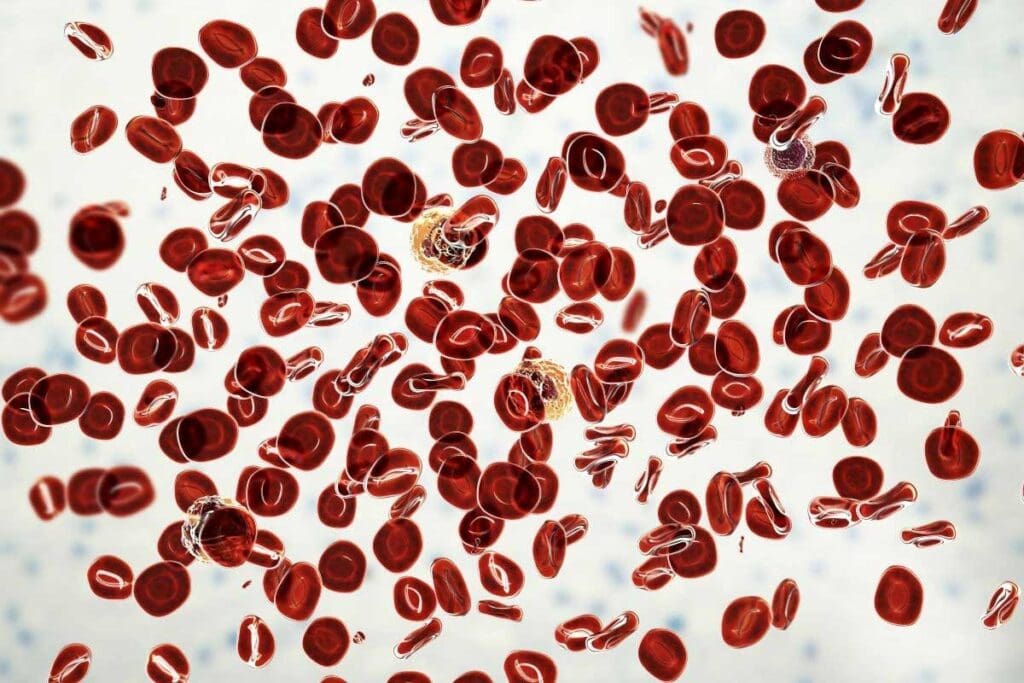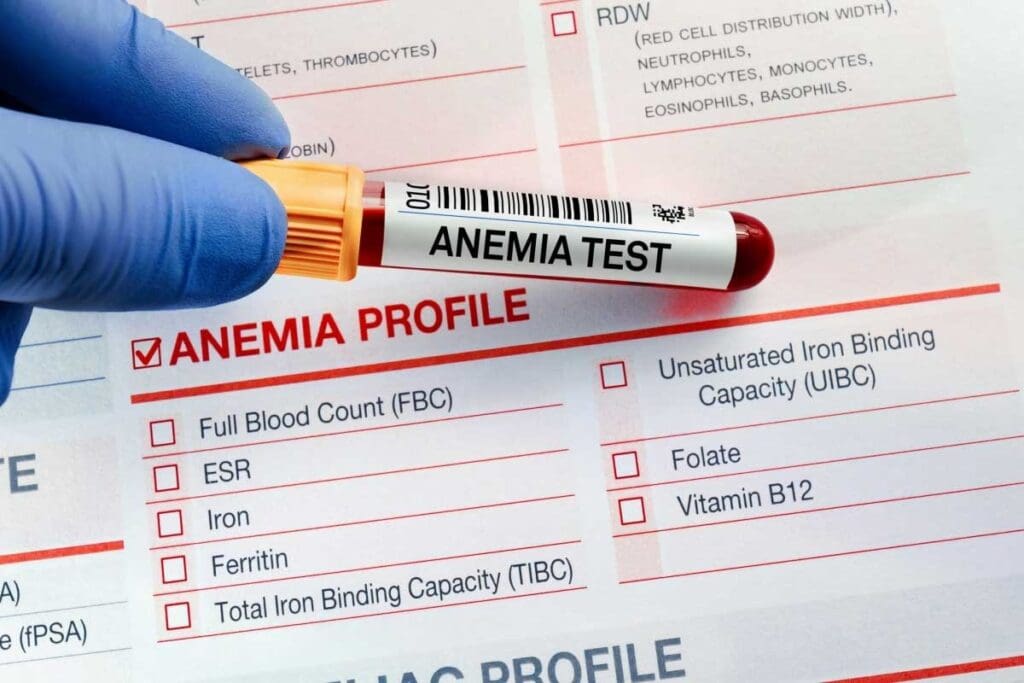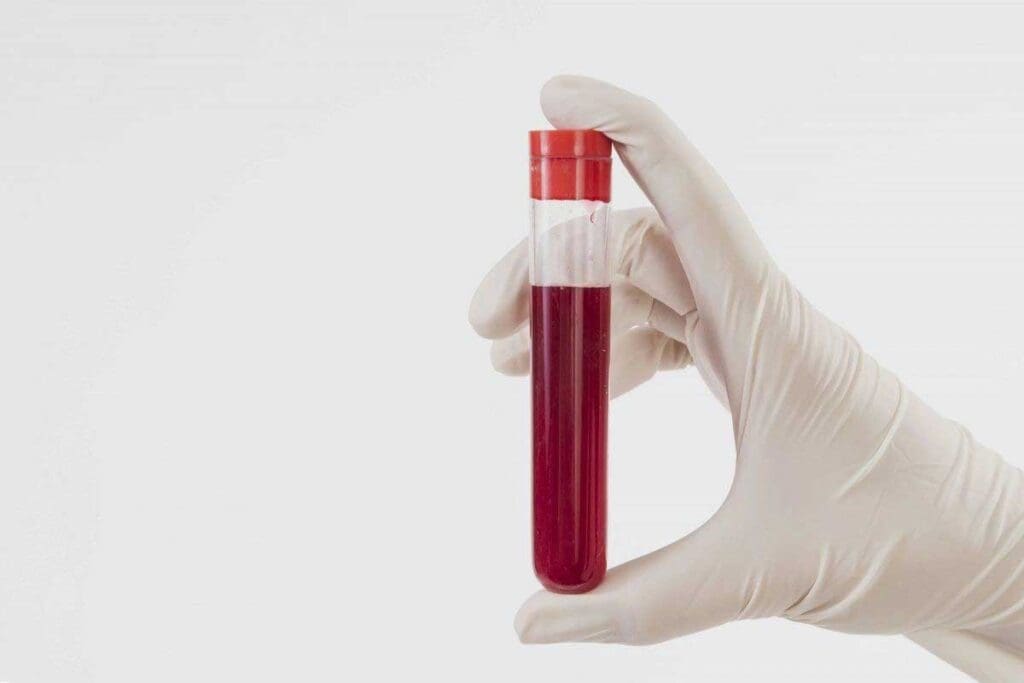Last Updated on November 20, 2025 by Ugurkan Demir

Diagnosing aplastic anemia needs a detailed look at the blood smear and lab results. At Liv Hospital, we use many tools to spot this rare but serious blood disorder.
Aplastic anemia happens when the bone marrow can’t make enough blood cells. A blood smear shows fewer blood cells in all types, with almost no reticulocytes.
We stress the need for correct diagnosis. We look at lab results to see low counts of red blood cellsaplastic anemia blood smearCommon Blood Disorders: Types, Symptoms & Treatments, white blood cells, and platelets. Our team is committed to caring for you with trust and care at every step.

It’s key to know how aplastic anemia works to catch it early and treat it well. This condition happens when the bone marrow can’t make blood cells. This leads to pancytopenia, a drop in red, white blood cells, and platelets.
Aplastic anemia means the bone marrow can’t make blood cells. This is due to the immune system attacking the stem cells or the stem cells not working properly. The causes are complex and involve many factors.
People with aplastic anemia often feel tired, get sick easily, and bleed a lot. These issues come from not having enough blood cells. Anemia makes you tired, low white blood cells make infections common, and low platelets cause bleeding.
Aplastic anemia can hit anyone, but it’s more common in young adults and the elderly. Things like chemicals, drugs, radiation, viruses, and autoimmune diseases can increase your risk.
Knowing who’s at risk and why helps us prevent aplastic anemia. It’s all about spotting the danger signs early.

Diagnosing aplastic anemia starts with a detailed initial clinical evaluation. A thorough patient history and physical examination are key. They help assess patients with suspected aplastic anemia.
A detailed patient history is vital. It helps identify causes and risk factors of aplastic anemia. We ask about exposure to toxins, chemicals, or radiation and medication use that might harm bone marrow.
We also look for symptoms like fatigue, infections, or bleeding. Knowing the patient’s medical history and family history is important. It gives us clues about aplastic anemia.
A thorough physical examination is essential. We look for signs like pallor, jaundice, or petechiae. These can indicate anemia, jaundice, or low platelets.
We also check for lymphadenopathy or hepatosplenomegaly. These signs can point to underlying conditions. We look for signs of bleeding or infection, like bruising or fever. These findings help us understand the severity of the condition.
Aplastic anemia is suspected in patients with pancytopenia symptoms. This includes anemia, infections, or bleeding disorders. We should watch out for patients exposed to marrow toxins or with a history of aplastic anemia.
Unexplained cytopenias or a mix of anemia, low neutrophils, and low platelets need further investigation. These signs suggest aplastic anemia. We should consider it when evaluating patients with these symptoms.
Diagnosing aplastic anemia starts with a key test: the complete blood count (CBC). This test shows the different parts of blood, like red and white cells, and platelets. It helps us spot problems that might mean aplastic anemia.
Looking at CBC results for aplastic anemia, we search for pancytopenia. This is when all blood cell counts are low. It shows the bone marrow isn’t making enough blood cells.
A CBC report shows things like hemoglobin, hematocrit, white blood cells, and platelets. In aplastic anemia, these numbers are often too low.
Pancytopenia is important because it shows the bone marrow isn’t working properly. This leads us to look deeper into why the bone marrow isn’t working.
“Pancytopenia is a critical finding that necessitates a thorough diagnostic workup to determine its underlying cause.”
Knowing about pancytopenia helps us tell aplastic anemia apart from other conditions with similar blood issues.
Watching how blood counts change over time is key. It helps us see how severe aplastic anemia is and how well it’s responding to treatment. CBCs done at different times give us clues on how the disease is moving.
Healthcare providers use these changes to decide if they need to do more or change treatment plans.
The peripheral blood smear is key in diagnosing aplastic anemia. It shows the shape and size of blood cells. This helps doctors tell aplastic anemia apart from other blood disorders.
Preparing a blood smear is a detailed process. Proper technique is essential for a good smear. The steps include:
Attention to detail is important to avoid mistakes in the smear.
In aplastic anemia, the blood smear shows fewer blood cells. This is called pancytopenia. Key features include:
| Cell Line | Morphological Features in Aplastic Anemia |
| Red Blood Cells (RBCs) | Normocytic and normochromic, with a reduced number of reticulocytes |
| White Blood Cells (WBCs) | Leukopenia, with a decrease in all types of WBCs |
| Platelets | Thrombocytopenia, with a reduced platelet count |
The blood smear findings in aplastic anemia are unique. But they can look like other conditions. Differential diagnosis is needed to rule out other causes of low blood cells.
For example, myelodysplastic syndromes can also have low blood cells. But they show changes in blood cells that aplastic anemia doesn’t. Leukemia can be told apart by the presence of blasts in the blood or bone marrow.
Getting the right diagnosis involves looking at the blood smear, clinical signs, and lab tests together.
Knowing about reticulocyte count is key in diagnosing and treating aplastic anemia. This test measures young red blood cells in the blood. It shows how well the bone marrow is making new blood cells.
Reticulocytopenia means having too few young red blood cells. It’s a sign of aplastic anemia. The bone marrow can’t make enough new red blood cells, which is a main problem in this disease.
The corrected reticulocyte count is a special calculation. It takes into account the patient’s hematocrit and what’s normal. This helps us see how well the bone marrow is making red blood cells.
For example, let’s say a patient has a reticulocyte count of 1.5% and a hematocrit of 0.25. If the normal hematocrit is 0.45, the corrected count would be 0.83%. This shows how the bone marrow is doing compared to the patient’s anemia.
The reticulocyte count and its corrected value show how severe aplastic anemia is. A lower count means the bone marrow is failing more. Doctors use these numbers to figure out how bad the disease is.
| Disease Severity | Reticulocyte Count | Clinical Implications |
| Mild | Low but detectable | Minimal symptoms may not require immediate treatment |
| Moderate | Significantly low | Noticeable symptoms may require supportive care |
| Severe | Very low or undetectable | Severe symptoms require aggressive treatment |
In conclusion, the reticulocyte count is a key tool in diagnosing aplastic anemia. Understanding reticulocytopenia, calculating the corrected count, and linking it to disease severity are important. They help doctors diagnose and manage the condition well.
Diagnosing aplastic anemia requires a detailed lab test. It looks at CBC and other important tests. These tests help doctors know the exact cause and how severe it is.
The CBC gives a first look at aplastic anemia. But other tests give more details. For example, the reticulocyte count shows if the bone marrow is making new red blood cells.
Other tests include:
Biochemical markers are key in diagnosing aplastic anemia. They help find the real cause of the condition.
| Biochemical Marker | Significance in Aplastic Anemia |
| Vitamin B12 and Folate Levels | Low levels can cause pancytopenia, like aplastic anemia |
| Liver Function Tests | Show if liver disease is present |
| Renal Function Tests | Check for kidney problems |
| Erythropoietin Levels | May be high due to anemia |
To confirm aplastic anemia, other conditions must be ruled out. Tests include:
By using these tests, doctors can accurately diagnose aplastic anemia. They can then plan the best treatment. This lab work is vital for managing the condition.
To accurately diagnose aplastic anemia, a bone marrow biopsy is done. This lets doctors check the marrow’s cell count. It’s key to confirm the diagnosis by looking at the bone marrow’s health.
A bone marrow biopsy takes a sample from the back of the hip. It’s done under local anesthesia to reduce pain. The sample is then ready for detailed examination.
The biopsy is usually safe, but it can have risks like bleeding or infection. It’s important to follow care instructions after the procedure to avoid these risks.
The bone marrow biopsy sample is examined closely to diagnose aplastic anemia. This analysis looks at the marrow’s cell structure. In aplastic anemia, the marrow has fewer cells and more fat.
This test also helps rule out other diseases that might look like aplastic anemia. It can spot fibrosis or cancer cells in the marrow.
Measuring marrow cellularity is a big part of the examination. In aplastic anemia, the cell count is very low. Doctors look at how much of the marrow is cells versus fat.
| Marrow Cellularity | Normal | Aplastic Anemia |
| Hematopoietic Cells | 40-60% | <30% |
| Fat Cells | 40-60% | >70% |
Measuring cellularity helps doctors see how severe aplastic anemia is and how well treatment is working. It’s a key factor in making treatment decisions.
Identifying aplastic anemia requires a detailed differential diagnosis. We must look at other bone marrow failure syndromes that share similar symptoms and lab results.
Myelodysplastic syndromes (MDS) are disorders with ineffective blood cell production. They often cause low blood counts and can lead to leukemia. Unlike aplastic anemia, MDS shows dysplastic cells in the bone marrow.
To tell MDS apart from aplastic anemia, we examine bone marrow cells and do cytogenetic analysis.
Paroxysmal nocturnal hemoglobinuria (PNH) is a rare disease that destroys red blood cells and damages the bone marrow. It can cause low blood counts, similar to aplastic anemia.
PNH is diagnosed by flow cytometry, which shows a lack of certain proteins on blood cells.
Leukemia and other cancers can also cause low blood counts by filling the bone marrow with cancer cells. A bone marrow biopsy is key to spotting these cancers and differentiating them from aplastic anemia.
Nutritional deficiencies, like vitamin B12 or folate, can lead to low blood counts. Tests for nutritional levels and bone marrow exams help tell these apart from aplastic anemia.
In summary, a detailed differential diagnosis is vital for diagnosing aplastic anemia correctly. By combining clinical evaluation, lab tests, and bone marrow exams, we can make sure the diagnosis is right and treatment is effective.
To diagnose aplastic anemia, doctors follow a detailed process. This includes various tests and evaluations. It ensures all important factors are looked at, leading to a correct diagnosis.
The steps to diagnose aplastic anemia are:
Each step gives vital information. Together, they help confirm the diagnosis.
Understanding the results of these tests is key. For example, a CBC showing pancytopenia, a low reticulocyte count, and a bone marrow biopsy showing hypocellularity point to aplastic anemia.
| Diagnostic Test | Typical Findings in Aplastic Anemia |
| Complete Blood Count (CBC) | Pancytopenia |
| Reticulocyte Count | Low reticulocyte count |
| Bone Marrow Biopsy | Hypocellular marrow |
If initial tests suggest aplastic anemia, referring the patient to a hematologist is essential. A hematologist can run and interpret more tests. This confirms the diagnosis and helps plan treatment.
There are common mistakes in diagnosing aplastic anemia. These include:
Knowing these pitfalls helps doctors avoid them and improve diagnosis.
Diagnosing aplastic anemia is a detailed process. It includes clinical checks, complete blood counts, blood smear tests, and bone marrow biopsies. After confirming the diagnosis, the next step is to plan the treatment.
We’ve covered the main steps in diagnosing aplastic anemia. This ranges from the first clinical check to lab results. Managing aplastic anemia effectively involves different approaches. These include immunosuppressive therapy and bone marrow transplants, based on each patient’s needs.
Creating a detailed treatment plan is key to good patient outcomes. Aplastic anemia labs are essential for tracking the disease and treatment progress. Knowing the diagnosis and treatment options helps healthcare providers make a personalized plan. This improves patient care and quality of life.
The first step is a complete blood count (CBC). It helps spot pancytopenia, a key sign of the condition.
A blood smear shows fewer blood cells. It also shows very few reticulocytes. This means the bone marrow isn’t making enough blood cells.
Reticulocytopenia, or low reticulocyte count, is a key sign of aplastic anemia. It shows the bone marrow isn’t responding well to anemia.
A bone marrow biopsy is key to diagnosing aplastic anemia. It shows a hypocellular marrow with fatty replacement, confirming the diagnosis.
In aplastic anemia, you see low counts of red and white blood cells and platelets. There’s also reticulocytopenia and a hypocellular bone marrow.
Aplastic anemia is different from other conditions like myelodysplastic syndromes and leukemia. This is through blood smear analysis, lab findings, and bone marrow biopsy.
The corrected reticulocyte count helps check if the bone marrow can make new red blood cells. It shows how severe aplastic anemia is.
Signs and symptoms include fatigue, infections, and bleeding. These happen because of pancytopenia and bone marrow failure.
Diagnosis is confirmed by clinical evaluation, lab findings, and bone marrow biopsy. The biopsy gives a clear diagnosis.
Avoid misreading lab results and missing other causes of pancytopenia. Also, don’t skip the bone marrow biopsy.
Subscribe to our e-newsletter to stay informed about the latest innovations in the world of health and exclusive offers!